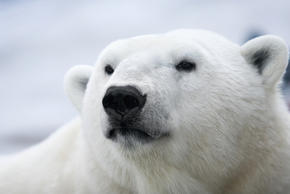How to get animals protected
PROTECTING SPECIES
OVERVIEW
 © Howard W. Buffett / WWF-US
© Howard W. Buffett / WWF-USFrom elephants to polar bears, WWF fights to secure a future for animals on the planet we all share. WWF helped bring back the Amur tiger and Africa’s black rhinos from the edge of extinction. We are giving isolated, dwindling populations of black footed ferrets and river dolphins a second chance.
WWF continues to keep habitats and landscapes thriving. We envision, create, test and deliver solutions for a crowded planet. We work with partners at all levels, from community leaders to governments and multinational bodies. But our work is far from done, and WWF constantly strives to protect the species we all care about.
5 forest-dwelling wildlife species we love
Celebrating World Wildlife Day with 5 of our favorite wildlife species living in forest habitats around the world.
 © WWF-Brazil
© WWF-BrazilWHAT WWF IS DOING
RHINOS
Rhinos were once widespread across Africa's savannas and Asia's tropical forests. But today very few rhinos survive outside national parks and reserves. Successful conservation efforts have helped subspecies like the greater one-horned (or Indian) rhino, to increase in number. In Africa, black rhinos have doubled in number over the past two decades, but total numbers are still a fraction of the estimated 100,000 that existed in the early part of the 20th century. Increasingly, rhinos are killed by poachers for their horns. WWF works to help governments and authorities crack down on wildlife crime. We set up training for law enforcement, track rhino movements via transmitters and set up hotlines—all to help stop poachers and build a future in which the rhino can thrive.
TIGERS
After a century of decline, tiger numbers are on the rise. At least 3,890 tigers remain in the wild, but much more work is needed to protect this species that’s still vulnerable to extinction. Tigers may be one of the most revered animals, but they are also vulnerable to extinction. WWF believes we can save wild tigers. We have set a bold but achievable goal of Tx2: doubling the number of tigers in the wild by 2022, when the next Year of the Tiger is celebrated.
POLAR BEARS

Polar bears spend the majority of most of their lives on frozen Arctic sea ice. The loss of sea ice habitat due to climate change is now the greatest threat to their survival. WWF aims to sustainably preserve the rich biodiversity of polar bear habitats. We work with partners and local communities to establish a management plan for the “Last Ice Area” in Canada and Greenland—a region scientists believe will be preserved as sea ice longer than anywhere else. The plan conserves habitat for all Arctic ice dependent species and protects the cultural heritage and economic needs of local people.
ORANGUTANS
Orangutans have experienced sharp population declines. A century ago there was likely more than 230,000 orangutans in the wild. Today, the Bornean orangutan is estimated to number about 41,000 and the Sumatran about 7,500, and their habitats are fast disappearing. WWF has worked on orangutan conservation since the 1970s. Our efforts include conserving orangutan habitat, stopping poachers, promoting sustainable forestry and agriculture, and halting the orangutan pet trade.
MARINE TURTLES

Nearly all species of marine turtle are classified as endangered. Human activities—hunting, poaching, habitat destruction and accidental capture in fishing gear—have tipped the scales against the survival of these ancient mariners. WWF is committed to stop the decline of marine turtles and work for the recovery of the species. Our work to secure a future for this species includes eliminating marine turtle bycatch from fisheries, reducing the unsustainable harvest and illegal trade in marine turtles, and stemming the loss of critical marine turtle habitats.

 LEIGH HENRYDirector, Wildlife Policy, Wildlife Conservation
LEIGH HENRYDirector, Wildlife Policy, Wildlife Conservation GINETTE HEMLEYSenior Vice President, Wildlife Conservation
GINETTE HEMLEYSenior Vice President, Wildlife Conservation

Comments
Post a Comment